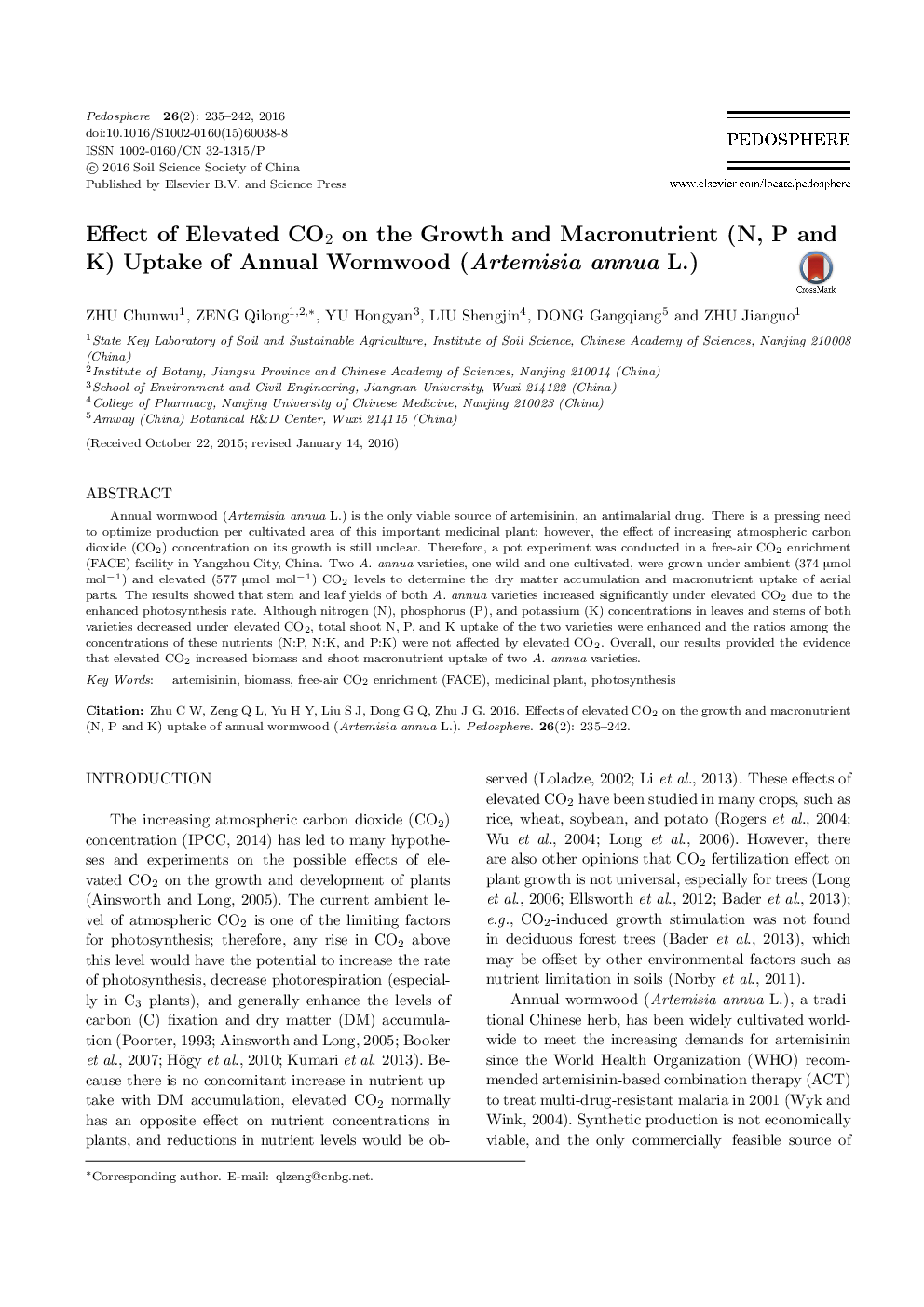| کد مقاله | کد نشریه | سال انتشار | مقاله انگلیسی | نسخه تمام متن |
|---|---|---|---|---|
| 4581130 | 1333683 | 2016 | 8 صفحه PDF | دانلود رایگان |
Annual wormwood (Artemisia annua L.) is the only viable source of artemisinin, an antimalarial drug. There is a pressing need to optimize production per cultivated area of this important medicinal plant; however, the effect of increasing atmospheric carbon dioxide (CO2) concentration on its growth is still unclear. Therefore, a pot experiment was conducted in a free-air CO2 enrichment (FACE) facility in Yangzhou City, China. Two A. annua varieties, one wild and one cultivated, were grown under ambient (374 μmol mol−1) and elevated (577 μmol mol−1) CO2 levels to determine the dry matter accumulation and macronutrient uptake of aerial parts. The results showed that stem and leaf yields of both A. annua varieties increased significantly under elevated CO2 due to the enhanced photosynthesis rate. Although nitrogen (N), phosphorus (P), and potassium (K) concentrations in leaves and stems of both varieties decreased under elevated CO2, total shoot N, P, and K uptake of the two varieties were enhanced and the ratios among the concentrations of these nutrients (N:P, N:K, and P:K) were not affected by elevated CO2. Overall, our results provided the evidence that elevated CO2 increased biomass and shoot macronutrient uptake of two A. annua varieties.
Journal: Pedosphere - Volume 26, Issue 2, April 2016, Pages 235-242
